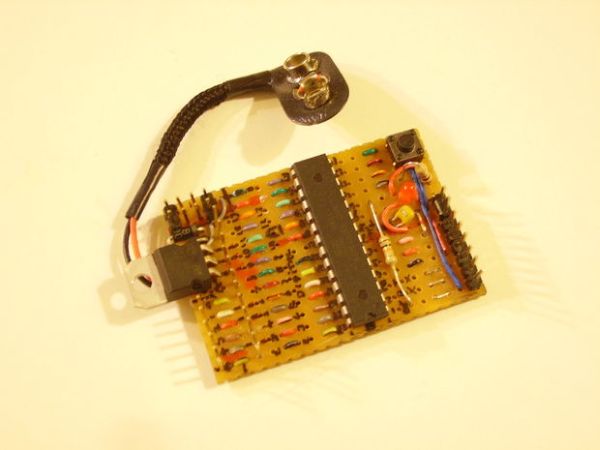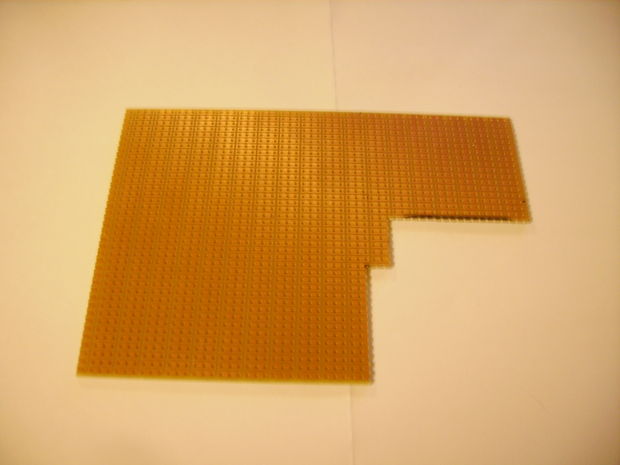This ible is for the building of my small, almost matchbox size, arduino compatable board.
As seen in this ible.. http://www.instructables.com/id/Pocket-Ardiuno-kit/

I experemented with the one in this ible to see how it can be impreoved, but the consept is the same and so is the build to a degree.
Origonally made as a pocket board for taking places with a few components for messing with.
Basic specs:
– atmega168/8/328
– TTL interface
– 5V lines
– reset button
– power LED
– Digital and Analog pins
– Lilypad or normal bootloader (depending on chip and weather u have a crystal or not)
Options: (depending on the setup you are making it for)
– 9V input and 7805 regulator for 9V battery power
– Crystal/oscilator for non lilypad bootloader
Pictured is the origonal used in the linked ible.
But for this ible i shall be running through the process by building a new one just for you :3
Step 1: Parts and Tools
You will need:
– Protoboard (i used the 3 hole strip type, but may be easier with full strip)
– 28 pin DIP socket
– 1K resistor X 2
– 1 x LED
– 1 x .01uf capacitor
– 1 x 8 pin header (5v and TTL)
– 1 x 12 pin header (digital pins)
– 1 x 6 pin header (analog pins)
– 2 x 4 pin header (power rail)
– 1 x pushbutton
– wire (i got mine from an old printer cable. lots aof wire and lots of colours 😉 )
Optional:
– 1 x 16 Mhz Crystal or resinator/oscilator
– 2 x .01 uf capacitors (only if using crystal, but you may get away with not using them)
– 1 x Diode 1n4001
– 1 x 7805 regulator
– 1 x .01uf capacitor (for regulator)
– 1 x 9V battery clip
Tools:
– Soldering iron
– Solder
– flux (its good S**t :3 )
– clippers of some kind (for cutting wire and legs.. not your legs tho, that would be bad.. cut the component legs.. 😛 )
– helping hands type thing or another pcb holder for soldering
Step 2: Prep the Board…
1st cut a board 14 x 21 (hole count x and y) make sure its clean.
If using stripboard and not the 3 hole strip kind then you will need to cut tracks in places..
*Plan out the placement of parts before you do this*
Mark up the board where you will be placing parts.
Step 3: Begin to Solder up…
Begin by preparing the headers. cut them to size.
Then prep spot for the chip socket..
Solder in a 1k resistor between pin1 of the chip socket and the +5v pin 20.
Join up the vcc pins (7 and 20) on the topside of the board with a small bit of component leg to the resistor leg, make sure it doesnt intefere with the chip socket placement.
NOTE: Check schematics to be sure.
Bridge the GND pins (8 and 22) with insulated jumper wire over the resistor leg as shown in the pics.
Then place and solder the chip socket in place.
Step 4: Reset, and Power
Solder in a capacitor between the pins 7 and 8.
Next solder in a LED and 1k resistor on the same track as the LED+ as shown, and join the resistor to the Vcc, and bridge the LED- to the gnd track next to it.
Using jumper wires, solder next to the button (as shown in pic) and run one to RST and the other to GND. Then solder in the button making sure it is the right way round or you will have your board in perminant reset 😉
For more detail: Compact Protoboard Arduino type thing yea

